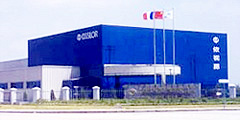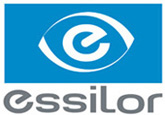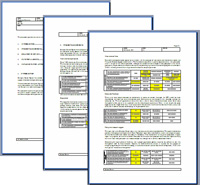World leader in optical products benefits from integrating maintenance in its supply chain

The second largest factory of the world leader in ophthalmic optics
The world leader in ophthalmic optical products, Essilor International (www.essilor.com) researches, develops, manufactures and markets a wide range of lenses to improve and protect eyesight. The Company reported consolidated revenue of more than €3.9 billion in 2010, with more than 35,000 employees and operations in 100 countries. Its flagship brands are Varilux, Crizal, Essilor, Definity and Xperio.

Shanghai Essilor Optical Company (SEOCL) manufactures organic lenses in its Shanghai, Songjiang factory since 1997. Lenses are produced using a traditional casting process and a more modern molding process. The Songjiang plant is the group’s second largest, with over 1,100 employees (around 30 of whom are dedicated to maintenance and utilities).
The initial assessment
SEOCL started working with Siveco in 2007, when an initial maintenance assessment was performed. The production appeared well organized, with 6-sigma and 5S improvement processes in place. Overall maintenance cost was not too high, but unexpected breakdowns did happen with potentially damaging impact on operations. The management of spare parts was not optimized, in spite of the implementation of a corporate ERP system (Oracle E-Business Suite).

Little or no financial-technical analysis was available to support the maintenance strategy, which meant that decisions (maintenance plans, modifications, investment) were often “educated guesses” or simply could not be made. The most immediate concern for SEOCL was clearly the lack of proper maintenance record and performance indicators, including those related to spare parts consumption. The management team was well aware of the situation and decided to launch a project with Siveco.
The maintenance improvement project
Siveco’s computerized maintenance management system (CMMS) Coswin was implemented to support improvement activities, in three main phases as shown in the chart below. A team of Siveco engineers involved throughout the project to advise SEOCL, to setup the system and to support end-users. The duration of the initial project was 4 months, after which the first technical-financial reports could be analyzed by the joint team.

Siveco Approach
A key component of this project was the integration between the CMMS and SEOCL’s Oracle E-Business Suite, aimed at optimizing the management of spare parts. SEOCL had implemented Essilor’s corporate ERP covering the finance, production, stock and purchasing processes. As is often the case, the ERP was designed with production in mind, not technical services. It however contained valuable information on suppliers, purchases and stock items, and formed the corporate support system for the company’s supply chain, of which maintenance was becoming an essential link.
Advanced interfacing made easy: getting more value from your ERP
While IT suppliers are known to make simple things complicated, Siveco followed a practical non-nonsense approach to meet the company’s management requirements.
This resulted in a design whereby the administrative process related to stock and purchasing remained in Oracle, in compliance with Essilor’s corporate guidelines and existing users’ habits. A layer of technical management was added in Coswin, linking parts to assets (build up of spare parts lists for each machine) and then to maintenance instructions (what parts are required to complete the job).
The issuing of parts in Oracle was to be made against a Work Order from Coswin, thus creating consumption records usable for technical analysis. As a result, it became possible to forecast parts needs based on preventive maintenance plans and historical consumption data, i.e. to more accurately budget spare parts costs and to optimize purchase plans. The link between technical requirements (from Coswin) and the actual purchasing (in Oracle) further simplified the communication between departments, ensuring the right part if purchased at the right time. The only change in existing business processes was that the stock keeper was now required to issue parts against a Work Order number, which is done in Oracle.

Principle of SEOCL COSWIN-Oracle interface
Technically the two-way interface was implemented using Coswin standard interfacing modules, which were configured accordingly. SEOCL’s IT department modified the Material Issue form in Oracle and learnt to maintain the interface program. No software development was required.
A few years down the line…
According to Sebastien Sabourault, SEOCL’s Managing Director, who initiated the project in 2007:
“We have, since the initial implementation of Coswin, been hiring Siveco for further coaching of our technical team, which helped us achieve more and more benefits from the utilization of the CMMS. As part of this effort, we have also been able to benchmark with other large multinational companies, sharing experience of maintenance improvement..”
SEOCL’s Manufacturing Manager Mr Zuo Lei Ming added:
“Siveco’s engineers have been working along my team, accompanying our growth and new challenges. As a result of this successful long-term partnership between us, we have most recently signed up for Siveco’s enhanced maintenance contract, which includes a yearly assessment, regular follow-up visits and an improvement guarantee. I am looking forward to this continuing relationship.”
The CMMS has become the tool for continuous improvement at SEOCL. The SEOCL maintenance team has achieved continuous improvement since the project started and, contrary to common belief, has demonstrated that benefits can actually increase over time. This is what Essilor has achieved in 2011 and 2012:
- MTBF +30% in two years
- Downtime first year -13%, second year -38%
- Downtime first year -13%, second year -38%
Due to confidentiality reasons, we cannot elaborate on the indirect savings (losses avoided) linked to these reliability improvements, which would involve multiplying downtime reduction by downtime cost/losses… Readers could for example take their own production figures and do a calculation to obtain financial values.
- Monthly cost (except labour, which is stable): from 802k in 2011 (19% attributed to Preventive Maintenance) to 580k in 2012 (with 43% PM).
This proves that PM ultimately costs less than corrective maintenance, although an initial effort is required. For 2012, this amounts to 2.6 millions RMB saved compared to the previous year…
In this case, indirect savings (losses avoidance) represents the bigger ROI. However, direct savings are always easier to measure! This is one of the many paradoxes of the maintenance business: don’t be fooled by this and do not focus on direct costs!
The successful experience of SEOCL has led other Essilor factories all over the world to hire Siveco for similar projects, for example Essilor Da Amazonia in Brazil and Essilor Laos.




